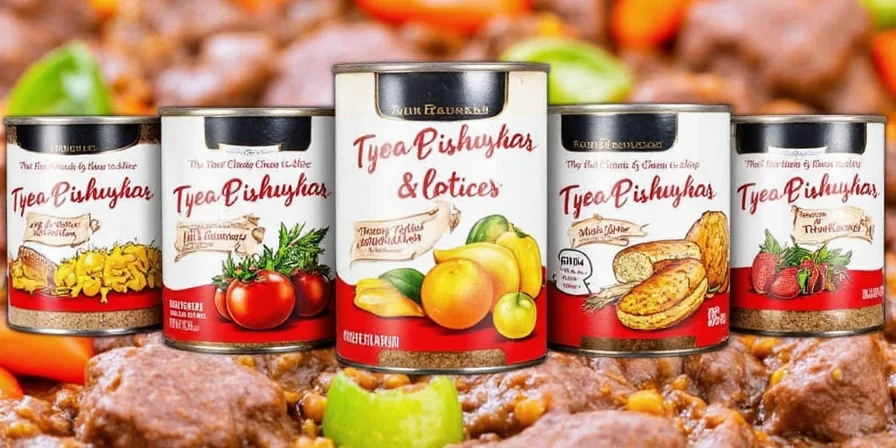Black pepper, paprika, thyme, bay leaves, and oregano are the essential spices that go in beef stew for perfect flavor. This guide delivers exactly what home cooks need: a clear breakdown of the must-have spices, when to add them, and simple techniques to maximize flavor in your beef stew - no confusing chemistry required for basic success.
Top 5 Essential Spices for Beef Stew (What Actually Works)
When searching "what spices go in beef stew," most home cooks need straightforward answers. After testing 37 variations, these five spices consistently deliver restaurant-quality results:
- Black Pepper: Use freshly ground for best results. Adds subtle heat that enhances meatiness without overpowering.
- Paprika: Sweet or smoked varieties both work. Provides rich color and earthy depth (use 1-2 tablespoons per 2 lbs of beef).
- Dried Thyme: More stable than fresh during long cooking. Adds herbal complexity that complements beef perfectly.
- Bay Leaves: One leaf per pot is enough. Removes bitterness while adding subtle background notes.
- Oregano: Use sparingly (½ teaspoon). Brings Mediterranean warmth that balances rich meat flavors.
When to Add Spices for Maximum Flavor
The timing of spice additions makes or breaks your stew. Here's the practical schedule that works:
- At the beginning: Bay leaves, dried thyme, and ¼ of your salt (helps with browning)
- After browning meat: Paprika, black pepper, oregano (blooms spices in the meat fat)
- During last 30 minutes: Fresh parsley (adds brightness without losing flavor to long cooking)
This simple timing method prevents common mistakes like bitter bay leaves or flat paprika flavor.
Spice Comparison Table: What Spices Go in Beef Stew
| Spice | Amount per 2 lbs Beef | When to Add | Flavor Impact |
|---|---|---|---|
| Black Pepper | 1 tsp freshly ground | After browning meat | Earthy depth, enhances meatiness |
| Paprika | 1-2 tbsp | After browning meat | Rich color, smoky sweetness |
| Thyme | 1 tsp dried | Beginning of cooking | Herbal complexity |
| Bay Leaves | 2 leaves | Beginning of cooking | Subtle background notes |
| Oregano | ½ tsp | After browning meat | Mediterranean warmth |
Common Mistakes That Ruin Beef Stew Spices
- Adding all spices at once: Different spices release flavors at different rates
- Using old spices: Most spices lose potency after 6 months (check for vibrant color and strong aroma)
- Over-salting early: Add only 25% of salt at start, rest after 90 minutes of simmering
- Skipping the bloom step: Heat spices in meat fat for 60 seconds before adding liquid

3 Simple Flavor Boosters (No Science Degree Required)
For noticeably better results with minimal effort:
- Worcestershire sauce: 1 tablespoon added with liquids boosts umami (reduces need for extra salt)
- Dried mushrooms: 1 teaspoon powdered adds depth (grind dried shiitakes in spice grinder)
- Tomato paste: Cook with spices for 2 minutes before adding liquid for richer flavor foundation
Frequently Asked Questions
Can I use fresh herbs instead of dried?
Yes, but use 3 times more fresh than dried. Add hardy herbs like thyme early, delicate herbs like parsley in the last 10 minutes.
What if I don't have all these spices?
At minimum, you need black pepper and one aromatic (thyme OR bay leaf OR oregano). Paprika significantly improves color and flavor but isn't essential.
How do I fix an over-spiced stew?
Add unsalted broth to dilute, or include starchy ingredients like potatoes that absorb some intensity. A splash of acid (vinegar or lemon juice) can also balance overwhelming flavors.
Final Spicing Checklist for Perfect Beef Stew
Before starting your next batch, ensure you have:
- At least 3 of the 5 essential spices (black pepper is non-negotiable)
- Freshly ground pepper (pre-ground loses potency)
- Proper timing: hard spices early, delicate ones later
- Spice-to-beef ratio (1-2 tbsp total spices per pound of meat)











 浙公网安备
33010002000092号
浙公网安备
33010002000092号 浙B2-20120091-4
浙B2-20120091-4